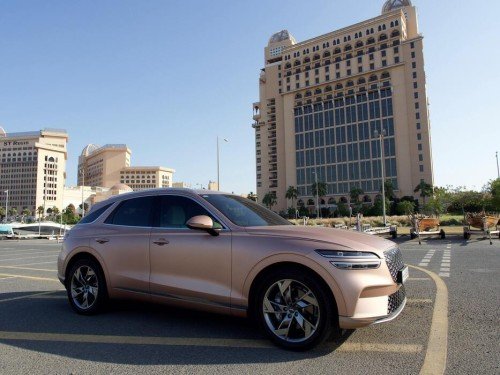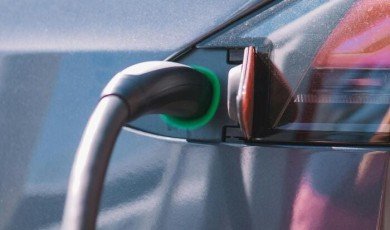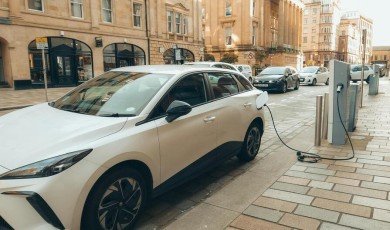
The global automotive industry is undergoing its most significant transformation since the invention of the internal combustion engine. At the heart of this revolution lies the electric vehicle (EV), a technology that is reshaping how we move, how we fuel our journeys, and even how we imagine cities of the future. With governments, manufacturers, and consumers driving the transition toward sustainable mobility, electric cars are no longer a distant dream but a present reality.
The Rise of Electric Vehicles
Electric vehicles were once seen as niche products for environmentally conscious drivers. Today, they have entered the mainstream, with sales growing year after year. Countries across Europe, Asia, and North America are incentivizing EV adoption with tax breaks, subsidies, and stricter emission regulations. This momentum is not just about reducing greenhouse gases, it’s about creating a smarter, more sustainable way to move people and goods.
Environmental Benefits
One of the strongest arguments for EV adoption is their environmental impact. Unlike conventional vehicles, electric cars produce zero tailpipe emissions, helping to reduce urban air pollution. When paired with renewable energy sources such as wind or solar, their carbon footprint becomes even smaller. Cities plagued by smog are now seeing EVs as a vital tool in combating climate change and improving public health.
Technology Behind the Wheel
Electric vehicles are more than just cars powered by batteries. They represent a convergence of cutting-edge technologies: advanced lithium-ion batteries, regenerative braking systems, and smart software that optimizes energy consumption. Many EVs also come with autonomous driving features and connectivity that transforms them into “computers on wheels.” These innovations are not only changing how cars operate but also how drivers interact with them.
Infrastructure and Charging Networks
For EVs to reach their full potential, charging infrastructure must keep pace with demand. Fast-charging stations are being rolled out across highways, shopping centers, and residential areas, making it increasingly convenient for drivers to recharge. The development of ultra-fast chargers, capable of powering a vehicle in minutes rather than hours, is helping eliminate “range anxiety”, a major barrier to widespread adoption.
Economic Implications
The rise of electric vehicles also has broad economic consequences. Traditional automakers are investing billions in EV research and development, while new startups are entering the market with innovative models. Oil companies are diversifying into renewable energy and charging infrastructure, while governments are recalibrating policies around transportation taxes and incentives. The EV revolution is creating jobs, spurring innovation, and driving a new industrial era.
Changing Urban Mobility
Electric vehicles are more than just personal cars. They are central to the development of smart cities. Ride-sharing platforms, delivery services, and even public transportation are adopting electric fleets to reduce emissions and noise pollution. Imagine a city where taxis, buses, and even garbage trucks run silently on electricity, this is becoming a reality in places like Oslo, Amsterdam, and Shenzhen.
Global Collaboration and Localization
The electric vehicle industry is truly global. Manufacturers in the United States, Europe, and Asia are competing and collaborating to push the boundaries of innovation. As vehicles and their technologies are exported worldwide, there is a growing need for accurate communication across languages and markets. This is where professional translation services play a crucial role, ensuring that technical manuals, safety guidelines, and marketing campaigns are adapted accurately for diverse audiences. Without these services, vital information could be lost in translation, slowing down adoption and creating barriers in international markets.
Industries beyond automotive face similar challenges, even in leisure activities like tourism, where translation services improve paddleboarding experiences. The principle is the same: language clarity builds trust and accessibility, no matter the sector.
Overcoming Challenges
Despite the progress, EV adoption still faces hurdles. The cost of batteries, though falling, remains significant. Charging infrastructure, while expanding, is unevenly distributed across countries. Moreover, questions remain about the environmental impact of mining materials like lithium and cobalt. Addressing these challenges will require ongoing innovation, policy support, and international cooperation. Here again, communication plays a central role. Just as political institutions rely on certified French translation to ensure legal accuracy across borders, the EV sector depends on professional translation to align regulations, safety standards, and research efforts worldwide.
Looking Ahead
The future of mobility is electric. With advancements in battery technology, growing infrastructure, and increasing consumer awareness, EVs are poised to dominate the roads in the coming decades. Beyond cars, the electrification trend is spreading to trucks, buses, motorcycles and even aircraft. The transition is not just about replacing one type of vehicle with another, it is about redefining how societies move, interact, and sustain themselves in a changing world.This is why international collaboration in EV research must be underpinned by clear communication. Much like certified French translation services are used in research data projects, multilingual precision ensures that findings, designs, and innovations can be shared without misinterpretation.
So, electric vehicles represent more than a shift in technology, they embody a cultural and industrial transformation. By offering cleaner, smarter, and more connected mobility solutions, EVs are paving the way for a sustainable future. From reducing emissions in cities to creating global collaboration across industries, the EV movement is driving us all toward a greener horizon. The road ahead will not be without challenges, but one thing is clear: the future of mobility is electric, and it’s already here.
Most Read
Featured Posts

Il ruolo dei veicoli connessi nella vita urbana






